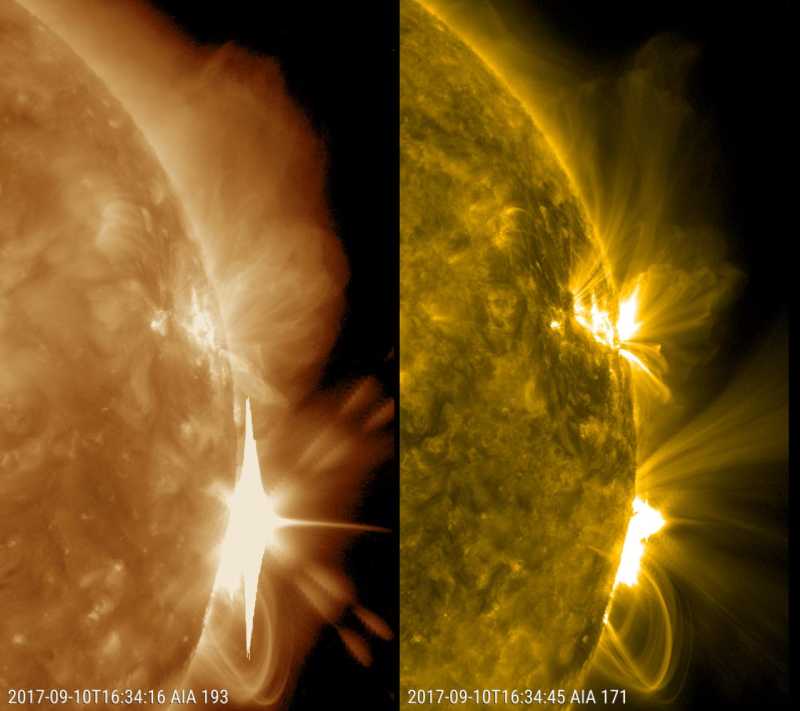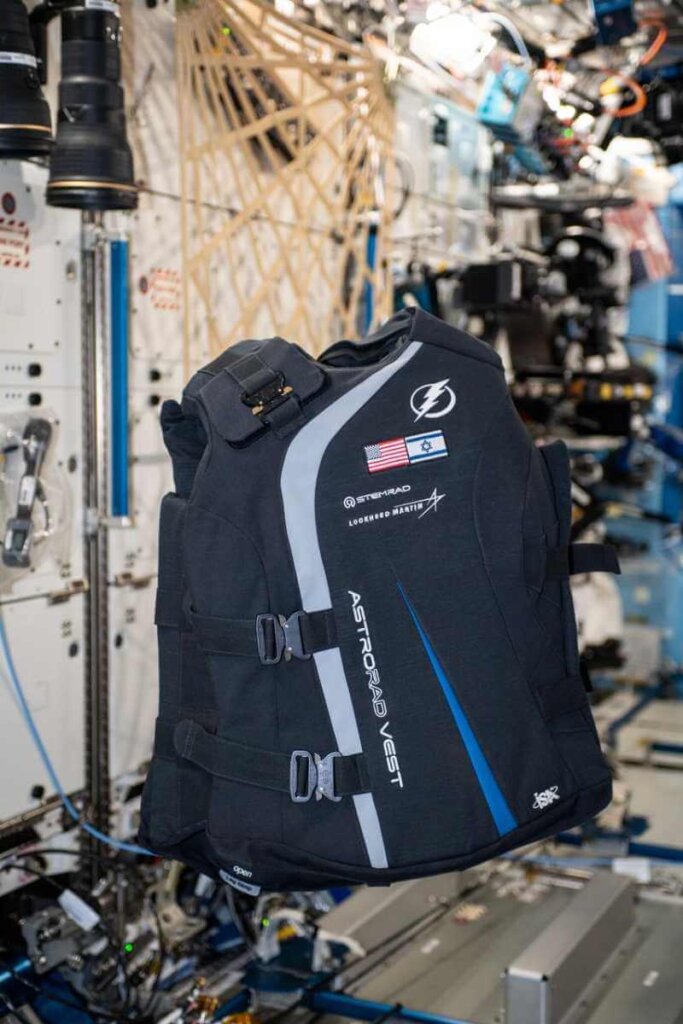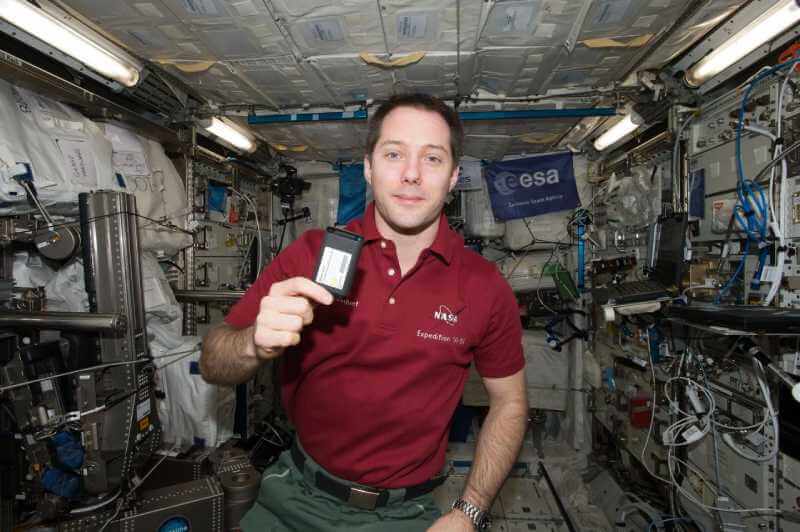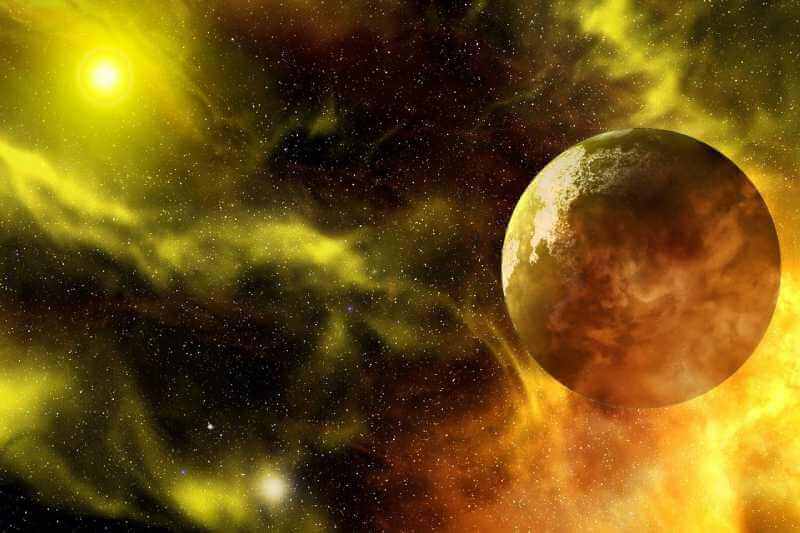On the Earth’s surface, the magnetic field protects us from the devastating effects of solar radiation produced by the sun. In space, astronauts don’t have the luxury of this invisible barrier. Radiation exposure is a serious concern for space travelers.
The Apollo program saw astronauts record their exposure to radiation through a device known as a dosimeter. Space travel technology has advanced tremendously since the end of the Apollo program in 1972. In 2019, China’s Chang’e 4 moon mission recorded radiation levels on the Moon, with its lunar rover and lander designed to simulate the protection astronauts receive inside their spacesuits.
The results showed the moon’s surface has high radiation exposure, with cosmic rays presenting a real hazard to astronauts. So, how are astronauts protected from radiation on space missions?
What Is Space Radiation?
Cosmic and solar radiation is energy carried or emitted as particles, electromagnetic waves, or rays. Science classifies radiation in two formats, non-ionizing and ionizing.
It’s possible to shield astronauts against non-ionizing radiation, but it’s a bit trickier to protect them against the effects of ionizing radiation. The sun constantly emits this form of radiation, consisting of charged particles that affect astronauts, especially on spacewalks.
Solar flare events and Coronal Mass Ejections (CMEs) deliver huge amounts of solar particles. The effects of solar forcing create geomagnetic storms powerful enough to compromise and distort satellite communications and disrupt technology and devices on Earth.
When supernovas occur outside the Milky Way galaxy, they release highly energized particles traveling at the speed of light. This highly energized radiation is challenging to shield against and contributes to 75% of lunar radiation on the moon’s surface.
Cosmic and solar radiation are examples of ionizing radiation, changing the charge of atoms it contacts. It can move through the human body, causing changes to tissues and DNA as it interacts with the astronaut’s physiology.
What Are The Health Risks of Exposure to Space Radiation?
The effects of exposure to ionizing radiation can be devastating for astronauts. Overexposure to these charged particles can lead to the development of conditions like cardiovascular and heart disease, radiation sickness, and cancer.
Ionizing radiation has a massive effect on the body at the DNA level, creating adverse biological changes at a cellular level that are impossible to reverse. So, it’s imperative that astronauts have protection against ionizing radiation, especially when conducting work during spacewalks.
The scale of biological damage incurred on an astronaut depends on the area of the body exposed to these charged particles and the radiation dose received through the duration of exposure. NASA identified three factors to mitigate the impact of radiation on astronauts in space.

The solar cycle, the altitude of the astronaut above the Earth’s surface, and the person’s susceptibility are the primary factors in understanding how radiation affects astronauts. For instance, young people and women have a greater risk of absorbing higher radiation levels than adult men.
Spacecraft Design to Protect Astronauts From Radiation
The spacecraft used in space missions feature several “bumper shields” consisting of a thin aluminum sheet reinforced with a webbing of epoxy and Kevlar. The composition of these materials is high in hydrogen and similar to the gear used in firefighting and military equipment.
There are gaps between the bumper shields acting to slow down charged particles. Recent developments by NASA to improve this technology introduced the theory of adding superconducting magnets in spacecraft to deflect ionizing radiation particles.
However, the issue with this idea is that superconducting magnets are heavy, large, and require cooling with a steady flow of liquid nitrogen. As a result, it adds more weight to the spacecraft, creating issues with launching the space vehicle.
What Do Astronauts Wear In Space To Protect From Radiation?
When astronauts go into space, they wear the Comfort and Human Factors AstroRad Radiation Garment Evaluation (CHARGE) AstroRad vest. The crew on the ISS recently tested these protective garments to prove their efficacy in shielding astronauts from the effects of unpredictable solar particle events (SPEs).

Developed by StenRad and Lockheed Martin, the AstroRad vest features design and construction with a proprietary polymer in variable thicknesses and a high hydrogen concentration to minimize secondary radiation.
Secondary radiation is produced when ionizing radiation particles interact with physical matter, such as the human body. The AstroRad vest aims to protect tissues and organs, like the heart and lungs, from radiation exposure, reducing cancer risk and adverse health effects from overexposure to charged particles.
Tools to Measure Radiation Exposure in Space
Radiation Detectors – RAD
The ISS US Lab module currently uses the RAD to detect radiation. RAD has two subsystems, the FND and CPD, which alert the ISS crew when radiation levels exceed safe limits, requiring the crew to shelter. The alarm is especially important if the Flight Control Team and ISS crew lose communication. The RAD also acts as a reference to track crew exposure trends during their mission. Based on this reference, the crew can track additional radiation exposure from EVAs.
Radiation Detectors – HERA & REMs
HERA and REMs use CERN Timepix tech to detect the passage of ionizing radiation through the detector sensor. The REM units monitor six modules in the ISS for radiation levels. The time-resolved operational aspect of the technology allows ground teams to separate the impact of components of space radiation on the crew. The REM units are installed in different locations across the ISS, revealing and recording vital data on the quantity of mass shielding in each area.
Crew Active Dosimeters
In 2020, SRAG started collecting time-resolved dosimetry data on individual ISS crew members by introducing Crew Active Dosimeters. This technology differs from passive dosimetry strategies that provide the cumulative radiation dose the astronauts receive on return to Earth. Crew Active Dosimeters measure and log radiation exposure each astronaut receives during the mission, providing continuous, ongoing data feeds for real-time accuracy.

Acute Radiation Risk Tool (ARRT)
The ARRT uses onboard dosimeters to capture radiation measurements in the astronaut’s organs and the chances of crew members on the ISS developing ARS symptoms during increased radiation exposure events, such as solar flares.
AART models the biological response to a SEP event based on neurovascular models for fatigue, weakness, vomiting, and nausea. It also incorporates hematopoietic models in four sets, monitoring the activity of platelets, granulocytes, lymphocytes, and leukocytes, in the astronaut’s peripheral blood after radiation exposure.
Conclusion
Astronauts expose themselves to many dangers during a mission. Disaster could happen anytime, from the launch to the hazards of working on EVAs. One of the biggest safety issues comes from an invisible threat, radiation.
Ionizing radiation can damage tissues and disrupt DNA in astronauts. Fortunately, NASA has the technology to mitigate the effects of radiation exposure on the crew. From specialized spacecraft and suit design to specialized instrumentation, the astronauts have everything they need to keep them safe from the harmful effects of the sun and the cosmos.

